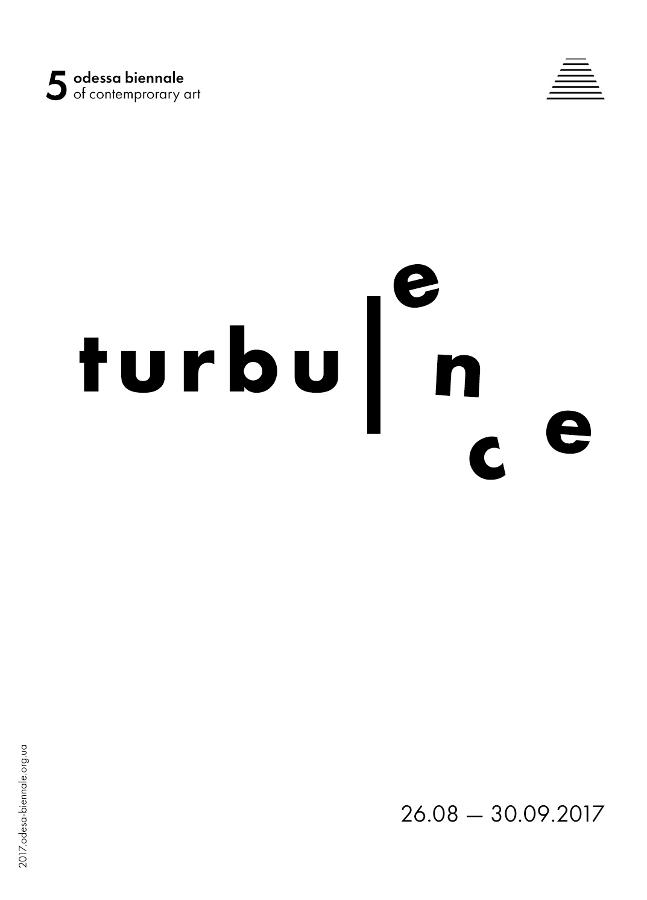V Odesa Biennale of Modern Art
10.08.2016 2023-11-20 18:41V Odesa Biennale of Modern Art

V Odesa Biennale of Modern Art, which will be held in Odesa (Ukraine) from 26 September to 30 Spring 2017, asks you to take part in the main part of the biennale – the project “Turbulence Zone”.
We will be glad to the most diverse forms of collaboration in the implementation of this project (individual participation of authors, group curatorial projects, participation in awareness-raising or discussion programs), for the minds of yours And the propositions support the statements of the topic.
The organizer of the Odesa Biennale is the Museum of Odesa Modern Art. Commissioner of the Biennale – Semyon Kantor, director of the museum.
The project will be presented at the exhibition halls of Odesa museums and galleries, as well as in alternative spaces.
The project program includes conferences, round tables, panel discussions, and publicity programs.
The curator of the main project of the Odesa Biennale-2015 is Mikhailo Rashkovetsky.
Information about the Odesa Biennale can be found here: http://odesa-biennale.org.ua/ua.html
Applications for participation will be accepted until January 31, 2016.
Proposals for participation in the project are accepted at the address: msio2008@rambler.ru.
The applicant is asked to indicate:
– CV and contacts: e-mail, phone, website (name);
– a short description of the proposed work or projects;
– photographs of the work (or sketches of the work) in jpg format with designated name, size, technique and creation process (for finished works) in the file name;
– if you need to submit a video (video documentation), please upload the materials to video hosting and send a message to the material or playlist.
Turbulence zone
Half a century after Elvin Toffler’s “Future Shock,” various sales managers discovered that we had stumbled into the turbulent flow of V.U.C.A. – instability, insignificance, complexity and ambiguity.
It is important to note that situations of turbulence are periodic phases in the development of human culture. And the stench stems from the cultural activity itself. Thus, the spirit of importance and thoroughness in the Renaissance era is replaced by the turbulent whirlwinds of the Baroque. If previously “turbulence” in culture was defined as “crisis” or “transitional” periods, with their space-hour boundaries, now the state of turbulence claims to be boundless. A long-standing curse: “May you be alive in the era of change!” loses its sense, since other eras, eras of stability, have not been transferred to current culture, and the “exit” from the zone of turbulence is considered to be in the form of a catastrophe that will end human life as a whole. The unity and continuity of the private and the private enter the most secure phase of rizik. The terminology requires radical features of project modeling in the minds of permanent changes that will accelerate in geometric progression.
One of these features was mysticism, for any robot with secret relationships, lively, dynamic, and constantly engaged in daily tasks. In the turbulence zone, the values of this function approach infinity.
Again and again we are called upon to marvel at the essence of social problems through the specific and universal optics of mysticism.
We understand that at the border where the hermeticity of the audience of current mystique, the birth of post-industrial marriage, is becoming unbearable.
The Odesa Biennale of current mystique now poses to artists a problem of a global nature, which, in the opinion of many authoritative specialists, is one of the signs of provincialism and marginality.
However, in the era of fundamental crises, and even more so – crises of fundamentality – the true outlines of the new often appeared in the margins of canonical texts, on the cordons that melted in the fire of innovation.
